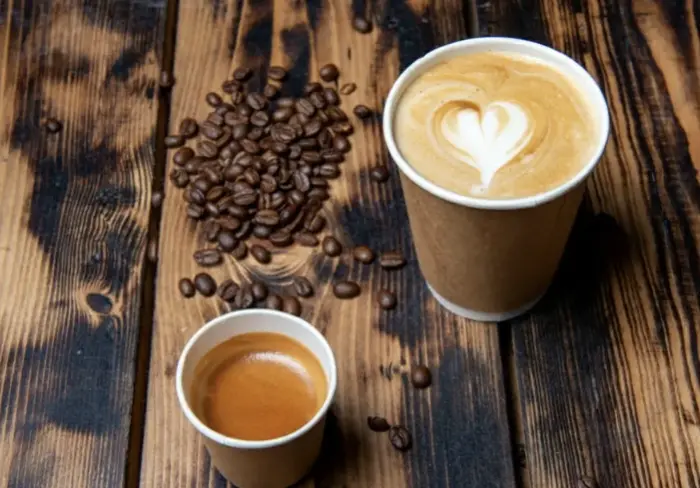When it comes to coffee, strength is a topic that often stirs debate. Many people assume that a darker, more intense flavor means a stronger coffee, but the reality is more nuanced. Two popular espresso-based drinks, espresso and lungo, often get compared in terms of strength. But which one is truly stronger?
To answer this, we need to explore what “strength” really means in coffee, how these two drinks are prepared, and how their caffeine content and flavor profiles differ.
Understanding Coffee Strength
Before comparing espresso and lungo, it’s important to define what “strength” means in coffee. Strength can refer to:
- Caffeine content – How much caffeine is in the drink.
- Flavor intensity – How bold or concentrated the taste is.
- Bitterness – The perceived sharpness or roasted bitterness.
Different brewing methods extract coffee differently, affecting these factors.
What is Espresso?
Espresso is a concentrated coffee brewed by forcing hot water through finely-ground coffee under high pressure. A standard shot is about 30 ml (1 oz) and takes 25-30 seconds to extract.
Characteristics of Espresso
- Rich, bold flavor – Strong, syrupy body with a layer of crema.
- Higher concentration – More dissolved solids per milliliter than regular coffee.
- Quick extraction – Prevents over-extraction, keeping bitterness in check.
What is Lungo?
Lungo (Italian for “long”) is an espresso variation where more water passes through the coffee grounds, resulting in a larger drink—about 60-90 ml (2-3 oz). The extraction time is longer, usually 40-60 seconds.
Characteristics of Lungo
- Milder taste – More water dilutes the intensity.
- More volume – Nearly double the size of a standard espresso.
- Extended extraction – Can lead to more bitter, over-extracted flavors.
Caffeine Content: Espresso vs. Lungo
A common misconception is that lungo has more caffeine because it’s bigger. However, caffeine extraction depends on:
- Brew time – Longer extraction pulls more caffeine.
- Water volume – More water dissolves more caffeine.
- Grind size – Finer grinds release caffeine faster.
Espresso Caffeine
- 63-85 mg per 30 ml shot (varies by bean and roast).
- Fast extraction limits total caffeine.
Lungo Caffeine
- 80-120 mg per 60-90 ml serving.
- More water and longer extraction increase caffeine yield.
Verdict: Lungo generally has slightly more caffeine, but not necessarily “stronger” flavor.
Flavor Intensity: Which Tastes Stronger?
Despite having more caffeine, lungo often tastes less intense than espresso. Here’s why:
- Dilution – More water spreads the coffee solubles, reducing concentration.
- Over-extraction – Longer brewing pulls bitter compounds, making it taste harsher but not necessarily stronger.
Espresso, with its thick body and concentrated oils, delivers a punchier, richer taste, even if it has slightly less caffeine.
Bitterness and Aftertaste
Bitterness is often confused with strength. While espresso can be bitter, its quick extraction minimizes excessive bitterness. Lungo, however, extracts more tannins and chlorogenic acids, leading to a more bitter, sometimes ashy aftertaste.
Which One Should You Choose?
The “stronger” option depends on your preference:
- For bold, concentrated flavor – Espresso.
- For more caffeine with a milder taste – Lungo.
- For balance – Try a ristretto (shorter than espresso) for even more intensity.
Brewing Factors That Affect Strength
Several variables influence the strength of both drinks:
Coffee Bean and Roast
- Dark roasts taste stronger but may have slightly less caffeine than light roasts.
- High-quality Arabica vs. Robusta (Robusta has more caffeine).
Grind Size
- Finer grind = more surface area = stronger extraction.
- Too fine can over-extract, making coffee bitter.
Water Temperature
- Ideal range: 90-96°C (194-205°F).
- Too hot = over-extraction; too cool = weak flavor.
Pressure
- Espresso machines use 9 bars of pressure.
- Lower pressure (like in a Moka pot) makes a different strength.
Common Myths About Espresso and Lungo
Myth 1: Lungo is Just a Big Espresso
No, the longer extraction changes the chemical profile, making it a different drink.
Myth 2: Espresso Has the Most Caffeine
Not necessarily—longer extractions (like lungo or drip coffee) often have more.
Myth 3: Stronger Taste Means More Caffeine
A light roast can have more caffeine than a dark one.
Expert Recommendations
Professional baristas often suggest:
- Espresso for a quick, intense coffee experience.
- Lungo if you prefer a larger, slightly milder cup with more caffeine.
- Adjust grind size to control extraction and avoid bitterness.
Conclusion
The debate over whether espresso or lungo is stronger depends on how you define strength. If you measure it by caffeine content, the lungo typically wins, as its longer extraction pulls slightly more caffeine from the coffee grounds. However, if you consider flavor intensity and concentration, espresso takes the lead with its bold, rich taste and thick crema.
Ultimately, the “stronger” choice comes down to personal preference. Do you crave a short, powerful burst of coffee? Espresso is your best bet. Prefer a larger, smoother drink with a bit more caffeine? Lungo might be the better option.
The beauty of coffee lies in its versatility—whether you enjoy the intensity of espresso or the extended sip of a lungo, both offer unique experiences worth exploring. Try them side by side and let your taste buds decide!
Related topics:
How to Grind Coffee Beans for Espresso Without a Grinder
What is the Best Espresso Powder for Baking?


